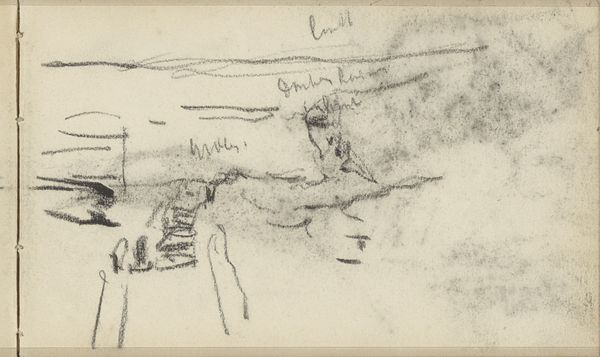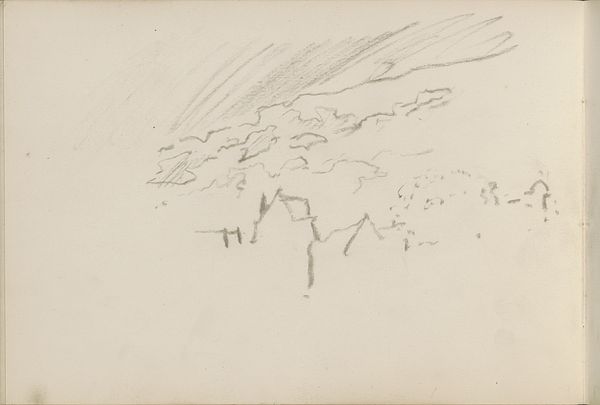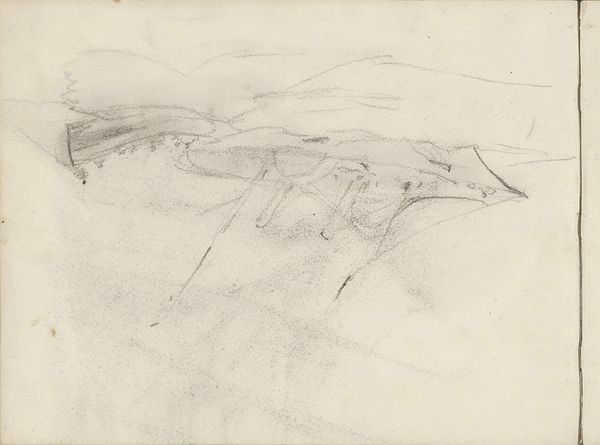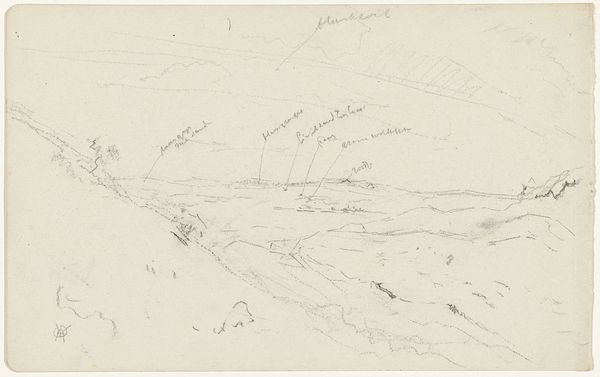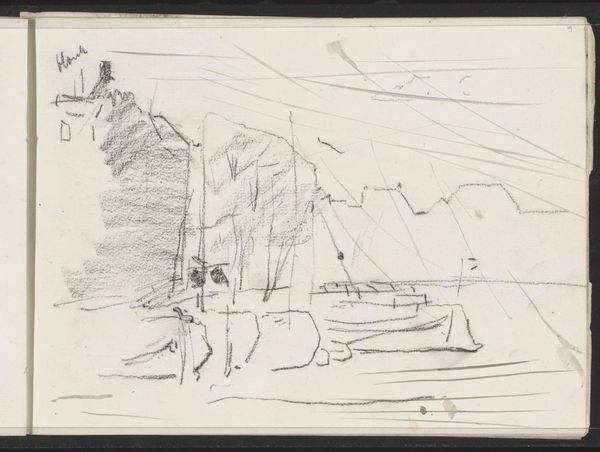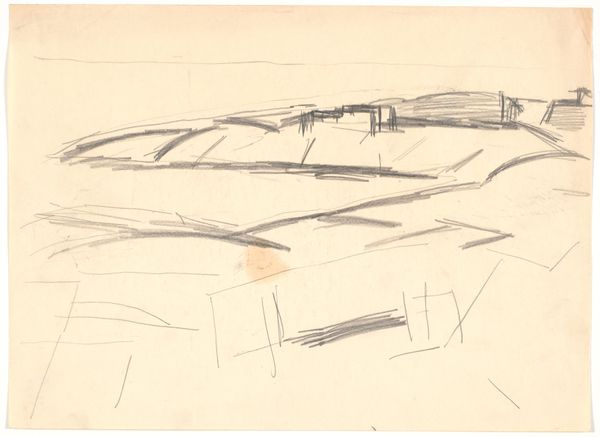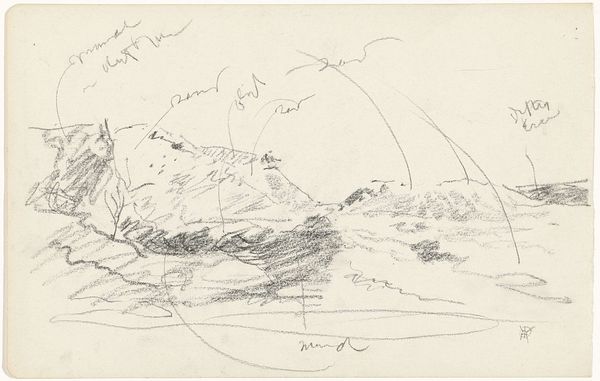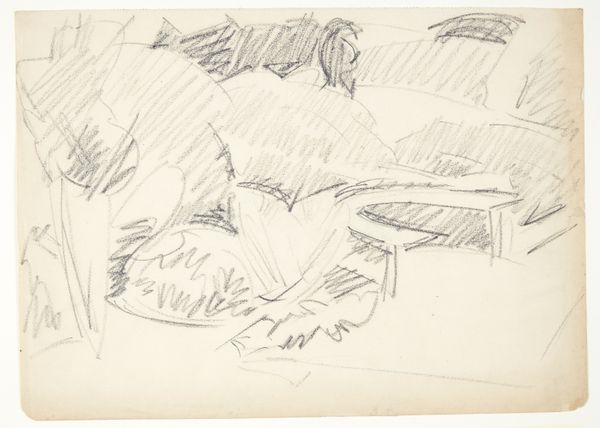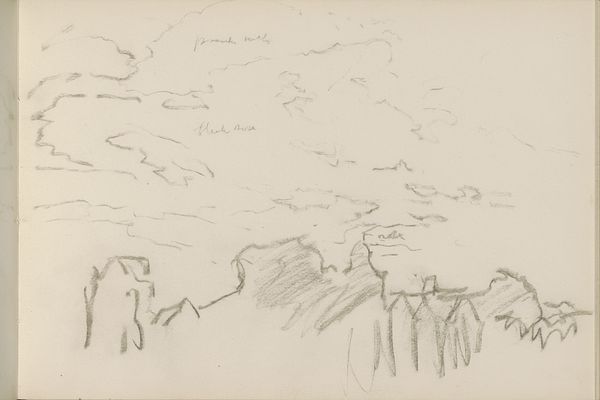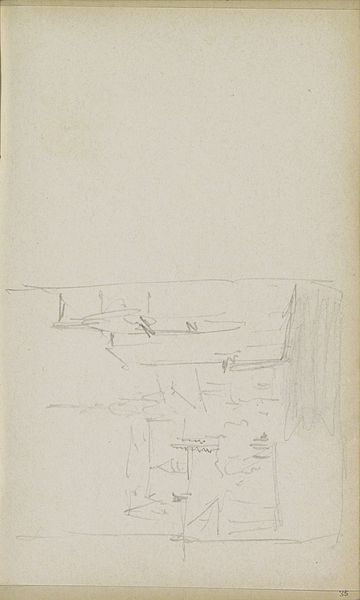
Huizen bij avond, mogelijk aan de Nieuwe Teertuinen te Amsterdam c. 1898 - 1914
0:00
0:00
Copyright: Rijks Museum: Open Domain
Editor: So, here we have Breitner’s “Huizen bij avond, mogelijk aan de Nieuwe Teertuinen te Amsterdam,” a pencil on paper drawing, likely created between 1898 and 1914. It’s such a delicate sketch! I’m curious, what captures your attention in this seemingly simple work? Curator: The rawness of the materials themselves—the humble pencil and paper— immediately pull me in. Breitner’s choice to employ these materials over more "elevated" media speaks volumes about his process. This wasn't about creating a polished product; it was about directly capturing a moment, a feeling. How does the immediacy of the sketch resonate with you in relation to Amsterdam's rapid urbanization during this time? Editor: I see your point about immediacy. It feels like a snapshot. But how does the "labor" aspect fit in here? It seems quickly dashed off. Curator: Consider the social context. Breitner wasn't just depicting buildings, he was capturing the homes and lives of working-class people during a period of massive social and economic change in Amsterdam. This seemingly hasty sketch represents the artist confronting the lived experience of urban life, and it offers insight into a labor that shaped this emerging industrial landscape. The act of sketching *was* the labor here. Editor: So you are saying that it challenges traditional "high art" notions because it foregrounds the *making* of art through these very simple, almost "everyday" means and media? Curator: Precisely! He elevates the ordinary, focusing on the physical act and the social realities, almost as a commentary on the nature of art creation and reception. The sketch allows us a glimpse into both the construction of the physical environment of Amsterdam, and into the construction of an artistic perspective in a rapidly modernizing society. Editor: I hadn't considered it that way before, seeing the pencil and paper as tools reflecting the larger social forces at play. Thank you. Curator: The value lies in reassessing assumptions about what makes "great" art, doesn't it? We are reminded to think about art in the context of making and materials.
Comments
No comments
Be the first to comment and join the conversation on the ultimate creative platform.

